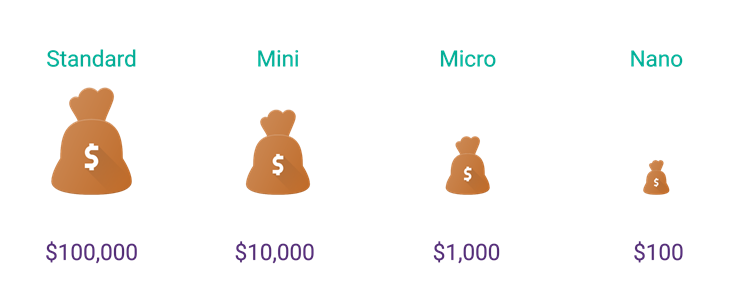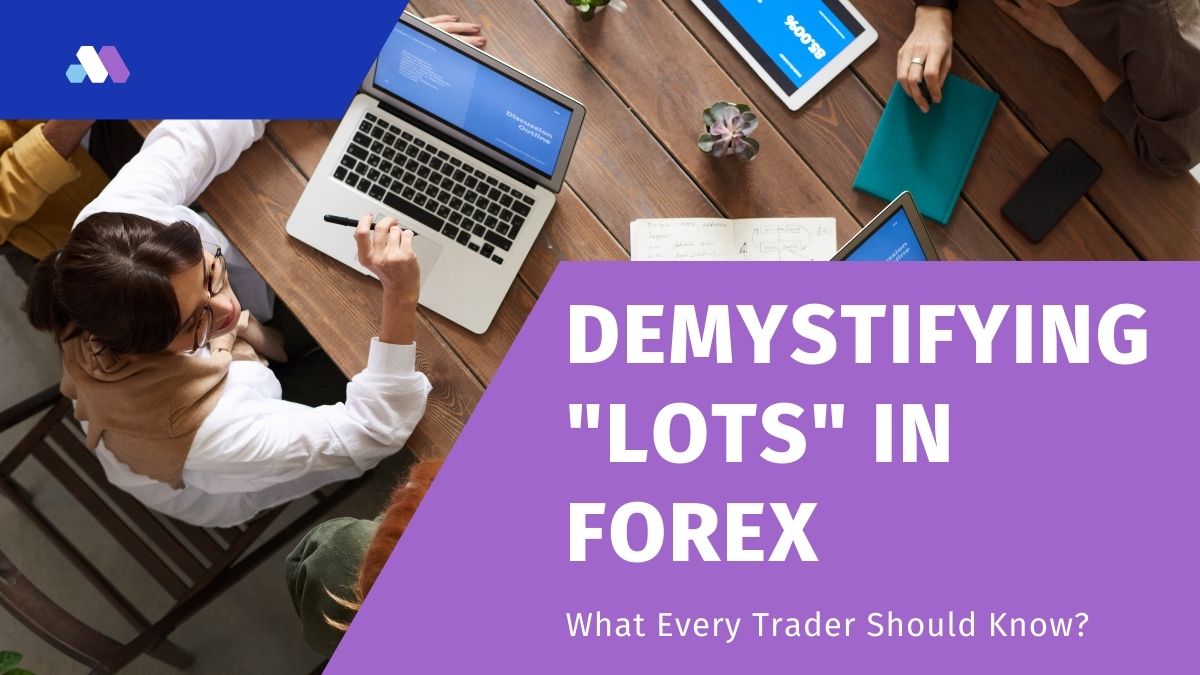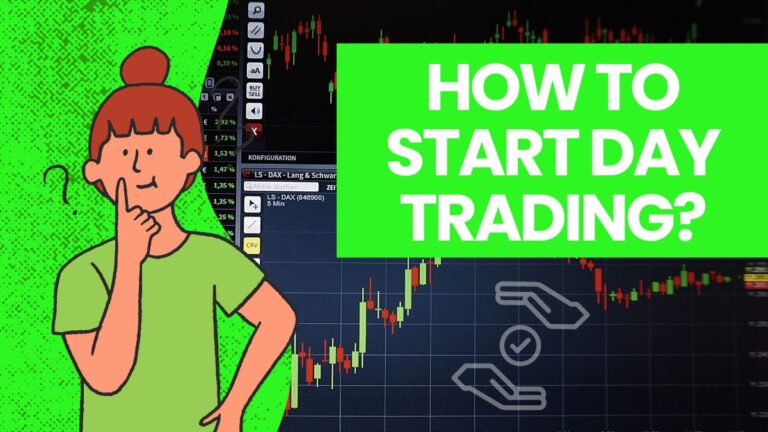Demystifying “Lots” in Forex: What Every Trader Should Know?

Welcome to the exciting world of Forex trading! As a trader, you’ve probably come across the term “lots” quite often, but have you ever wondered what it really means? Well, look no further as we’re about to demystify this crucial concept that every successful trader should know. Whether you’re a novice or seasoned pro, understanding lots in Forex is paramount to your success. So sit back, relax and let’s unravel the mysteries behind lots in the foreign exchange market!
Table of Contents
What is a Lot in Forex?

Most currency pairs are quoted to four decimal places, so a 0.0001 change in price is called a “pip.” For USD/JPY, a pip is 0.01, because this pair is only quoted to two decimal places (100 pips = 1.00). One “lot” in forex refers to a standard contract size of 100,000 units of currency. So when you buy one lot of USD/JPY, you are actually buying 100,000 U.S. dollars worth of Japanese yen. The concept of a “lot” is used by forex brokers to make it easy for customers to trade large contracts without having to calculate the total contract value for each transaction.
There are three different types of lots that you need to be aware of: standard, mini and micro. A standard lot is the equivalent of 100,000 units of currency, while a mini lot is 10,000 units and a micro lot is 1,000 units. When you trade just one standard lot of USD/JPY, the average value of your trade will be $100,000 ( not including commissions or other fees charged by your broker). If you were trading one mini lot instead ($10 per pip quality), then your average trade would only be $10 per pip quality).
The term “lot” can also refer to the number of base currency units that you are willing to buy or sell in a transaction. For example, if you say you want to buy 100 lots of USD/JPY, you are actually buying 1 million U.S. dollars worth of Japanese yen (100,000 x 10).
Overall, the lot is an important concept to understand when trading in the forex markets, as it can have a significant impact on your risk profile and the amount of capital being allocated to each trade.
Mini Lots and Micro Lots
A micro lot is 1,000 units of the base currency in a forex trade. A mini lot is 10,000 units of the base currency. Micro lots are used when trading very small amounts of money and are very useful for beginners and experienced traders alike. They allow you to trade with a smaller amount of risk.
Mini lots are still relatively small trades when compared to standard lots, which are 100,000 units of the base currency. Mini lots offer a good way to make small trades and test out new strategies without putting too much at risk. They also allow you to get a feel for the market before making larger trades.
For both mini lots and micro lots, the amount of potential profit or loss is much smaller than with a standard lot. Therefore, these types of trades are often used by traders who are just starting out in the forex market as well as those trading shorter-term strategies.
Calculating Lot Size
When it comes to FX trading, a lot refers to the standard unit of measurement for a transaction. In other words, when a trader places an order for one lot, they are essentially buying or selling 1,000 units of the base currency. So, if the EUR/USD is trading at 1.2134 and you purchase one lot of Euros, you will be buying 1,000 Euros at the rate of 1.2134 USD per Euro.
Now that we know what a lot is in FX trading, let’s take a look at how to calculate your position size in terms of lots. This is important because your position size will determine your potential profit or loss on a trade, and you don’t want to accidentally overleverage yourself.
To calculate your position size in lots, you will need to divide your total account balance by the margin requirement for the currency pair you are trading. For example, let’s say you have $10,000 in your account and you want to trade EUR/USD with 2% margin. To calculate how many lots you can trade with this setup, simply divide $10,000 by 0.02 (2%). This gives us a position size of 500 lots.
As such, if the EUR/USD moves 100 pips in your favor (from 1.2134 to 1.2234), each pip would be worth $5 and your total profit on the trade would be $500 (100 pips x $ 5 per pip).
It is also important to note that the size of a lot can vary depending on your broker, so make sure you check with them before trading to find out their specific requirements.
Impact of Leverage on Lot Size
Leverage is a key concept in forex trading, and it’s important to understand how it works and how it can impact your lot size. Leverage allows you to trade with more money than you have in your account, and it can be a powerful tool to help you generate profits. However, leverage can also work against you, and it’s important to use it carefully.
When you use leverage, you’re essentially borrowing money from your broker. The amount of leverage you can use depends on your broker and the margin requirements for the currency pair you’re trading. For example, if the margin requirement for EUR/USD is 2%, that means you can trade with $2 for every $1 in your account. So, if you have a $5,000 account, you could trade up to $10,000 worth of EUR/USD using leverage.
Leverage can help you make bigger profits when your trades are successful, but it also magnifies your losses when they go against you. That’s why it’s important to use stop-loss orders when trading with leverage, so that your losses are limited if the market moves against your position.
The amount of money that each “lot” represents also varies depending on the currency pair being traded. A “standard lot” usually refers to 100,000 units of the base currency in a currency pair (for example, 100 ,000 euros in EUR/USD). However, not all brokers offer the ability to trade standard lots. Some brokers allow traders to open “mini” or “micro” lots of 10,000 or 1,000 units of the base currency.
When leverage is factored in, the amount of money each lot represents can be significantly greater than 100,000. For example, if a trader has a $5,000 account and is trading with leverage of 1:100 (meaning they are able to use $500 for every $1 they have in their account), then a “standard lot” would be worth $50,000 instead of just 100,000 units of the base currency.
In summary, leverage can have a significant impact on your lot size because it allows you to trade with more money than you have available. It can give you access to larger profits when your trades are successful but also magnify your losses if the market moves against you. Be sure to use stop-loss orders to protect yourself when trading with high leverage levels.
Margin Requirements for Trading with Lots
A lot is a standard unit of measurement in the forex market. In general, one lot refers to a trade size of 100,000 units of the base currency. There are also mini-lots and micro-lots, which refer to trade sizes of 10,000 and 1,000 units of the base currency, respectively.
When trading with lots, it’s important to be aware of the minimum margin requirements that your broker imposes. Margin requirements vary from broker to broker, but they typically range from 1% to 5% of the full trade value. For example, if you’re looking to buy one lot of EUR/USD (100,000 euros worth of U.S. dollars), and your broker has a 2% margin requirement, you’ll need to deposit $2,000 into your account as collateral.
Keep in mind that margin requirements are subject to change at any time, so it’s important to check with your broker before making any trades. Also keep in mind that higher margin requirements may be imposed when trading larger lot sizes or more volatile currency pairs.
Pros and Cons of Trading with Lots
When it comes to trading forex, “lot” is a term you will hear often. A lot is simply a unit of measure used to describe the size of your position in a currency pair. In other words, when you buy or sell a currency pair, you are doing so in units of lots.
There are three different types of lots that you can trade: standard, mini, and micro. Standard lots are worth $100,000, mini lots are worth $10,000, and micro lots are worth $1,000.
The Pros.
- You can make more money with a standard lot than you can with a mini or micro lot because each pip is worth more. For example, if the EUR/USD moves from 1.1000 to 1.1100, that is a one cent move. If you were trading one standard lot, each pip would be worth $10. However, if you were trading one mini lot, each pip would only be worth $1 since there are 10 mini lots in one standard lot.
- You have more flexibility when it comes to setting your stop losses and take profits because your risk is spread out over more pips. For example, if you were trading one standard lot and put your stop loss at 10 pips away, your risk would be $100 (1 pip = $10). However, if you were trading 10 mini lots and put your stop loss at 10 pips away from your entry point, your risk would be $10 (1 pip = $1).
- You can take on more or less risk depending on your trading style and the size of your account. For example, if you have a large account and want to take on more risk, you can trade larger lots that will increase your potential profits as well as your potential losses. On the other hand, if you have a smaller account and are looking to take on less risk, you can also scale down and trade smaller lots that will lower both your potential profits and losses.
The Cons.
- Your risk per trade increases when trading with larger lots since each pip is worth more money. So even a small move against you could result in a large loss.
- You may not be able to afford to trade larger lots due to margin requirements imposed by some brokers for standard lots. Mini and micro lots may require a lower margin requirement which could make them a better fit for those with smaller trading accounts.
- You may find yourself overtrading if you are not careful since it becomes easier to enter into multiple trades with larger lot sizes than with mini or micro lot sizes. This could lead to rapid losses when combined with leverage, so traders should always use caution.
Overall, trading with lots can be beneficial for those looking to take on more or less risk depending on their account size and trading style. However, it is important to make sure that you understand the risks before entering into a trade with larger lots and always use caution when using leverage.
Alternatives to Trading with Lots

When trading forex, a lot refers to the standard unit of measurement for a transaction. One lot is equal to 100,000 units of the base currency, and since forex is typically traded in pairs, this means that one lot equals 100,000 USD. For many traders, trading with large lots is simply not possible due to the high capital requirements. However, there are some alternatives that can be used to trade forex without having to trade with large lots.
- One alternative is mini lots. A mini lot is equal to 10,000 units of the base currency, or $10,000 USD. This means that each pip is worth $1 with a mini lot. Mini lots are a great way to trade forex without having to put up a large amount of capital.
- Another alternative is micro lots. A micro lot is equal to 1,000 units of the base currency, or $1,000 USD. This means that each pip is worth $0.10 with a micro lot. Micro lots are perfect for traders who are just starting out and don’t have much capital to work with.
- There are nano lots. A nano lot is equal to 100 units of the base currency, or $100 USD. This means that each pip is worth $0.01 with a nano lot. Nano lots are perfect for traders who want to practice with very small amounts of money and don’t mind making very small profits (or losses).
Conclusion
In conclusion, understanding what a lot in Forex is and how its size impacts your risk can really help you when it comes to developing a trading plan. Flexible leverage levels will ensure that you don’t have too much of an exposure to unforeseen market movements or events. Make sure that the size of the lots you are trading match with your preferences in terms of financial goals, time constraints, experience level and capital available. Lastly, experimenting with different sizes and learning from mistakes can also help build your skills as a forex trader.






